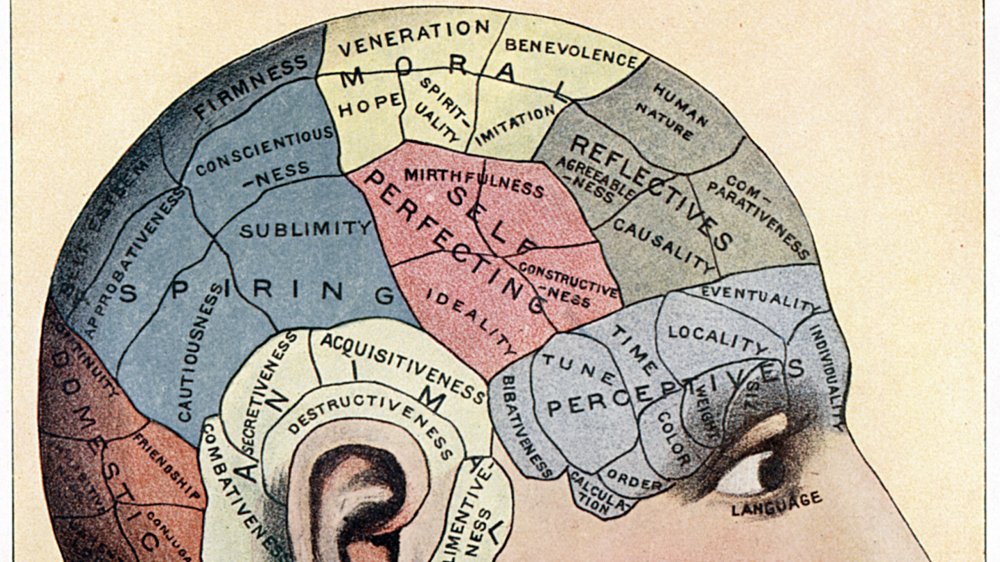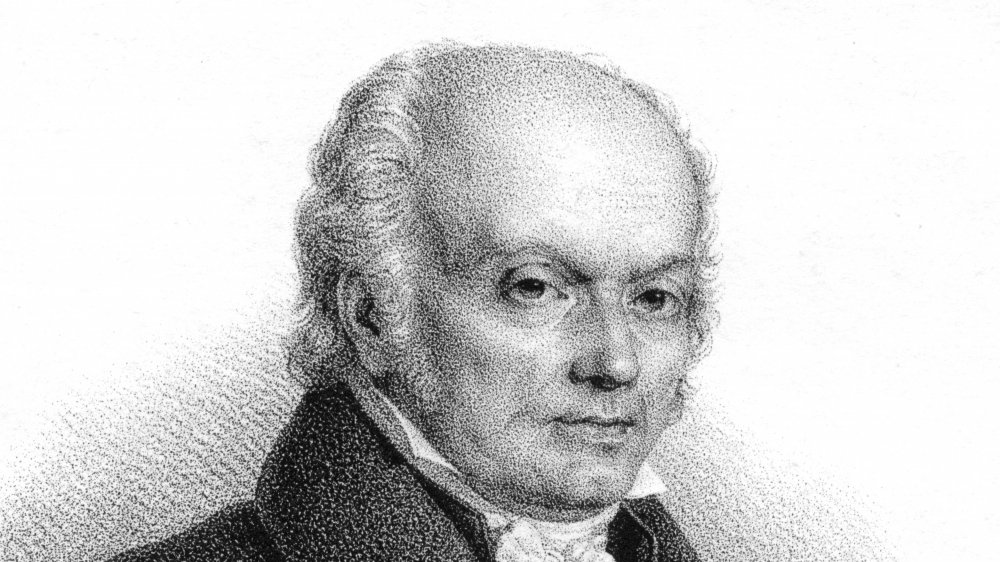The Strange History Of Phrenology
Take a quick jaunt over to Phrenology.org and you'll spot some fascinating claims. The seemingly abandoned website will tell you right off the bat that "Phrenology is a true science, which is there to benefit humanity." It also states that the science was abused by "some scrupless people." They probably meant "unscrupulous," but were tripped up by an irregularity in the suborbital linguistic region of their skull, the area associated with susceptibility to getting hooked on phonics.
Phrenology, if you're not familiar, is a thoroughly debunked old-timey pseudoscience. Taking a broad view, it was all about how a human being's personality could be accurately determined by measuring the bumps, lumps, and crevices of the human skull. A cursory glance at its history reveals that it was also, in scholarly parlance, totes racist.
It all started in the late 18th century with a Viennese researcher named Franz Joseph Gall. According to Smithsonian Magazine, Gall had noticed at an early age that his fellow students seemed to excel in school if they exhibited large foreheads and big peepers. Based on this observation, he concluded that the front of the head was where memory lived. Furthermore, he deduced that every other aspect of the human psyche could be measured via external features. Churches called it heresy. Fellow scientists called it bananas. And a few years later, the lecture circuit in the United States called it money in the bank.
Phrens in low places
In 1832, Johann Kaspar Spurzheim, a former student of Gall's, brought phrenology stateside. Six months of lectures across the U.S. made him a rockstar of the scientific community — the American Journal of Medicine reported his untimely death at the end of the tour, saying "The prophet is gone, but his mantle is upon us."
As with any philosophy claiming to be able to determine a person's personality based on exterior factors, phrenology became a popular go-to for the more bigotry inclined. A Vassar paper exploring the subject referred to the practice as "scientific racism," pointing out that the European roots of the pseudoscience pointed inexorably to the superiority of Europeans. Classically white features were lauded as tangible evidence of racial superiority. In 1837, physician Charles Caldwell concluded that the skulls of Africans featured an innate "tamableness." The belief that Native Americans were "adverse to cultivation" and "slow in acquiring knowledge" was used to justify their removal by Andrew Jackson. It was all pretty gross — and also profitable. In the 1840s, one of New York's most visited attractions was the Phrenological Cabinet, a museum of sorts set up by a pair of brothers who got their start offering skull reading for two cents a pop.
By the late 1800s, skeptics and critics from Mark Twain to the writers of Encyclopedia Britannica had offered accounts of phrenology's lackluster scientific value, and the practice was more or less abandoned by the turn of the 20th century. It does, however, maintain a small modern following among both the strange, and the scrupless.

